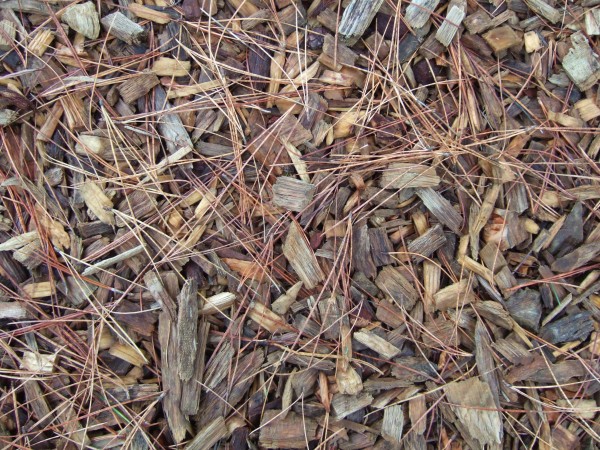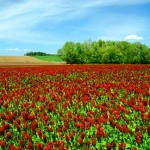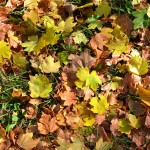
What is Mulch?
Mulch is a form of organic matter spread on the surface of the soil around plants to keep weeds down, conserve moisture and moderate soil temperatures all year long. Fall is a great time to apply mulch—getting ahead of cool season weeds and freezing winter temperatures. When applying mulch to beds with established woody plants, do not pile any material up around the trunks of the plants; leave a few inches clear to keep the plants safe from rot and fungal disease. Apply your desired mulch up to two inches deep and spread it evenly across the bed.
Types of Mulch
Leaves: Use fallen tree leaves directly in your garden. Why waste a free resource? Shred them with the lawn mower; they are a great nutrient source for the soil. Good choice for adding to vegetable gardens. Avoid using diseased leaves or leaves from trees that have alleopathic (growth-inhibiting) effects like black walnut and horse chestnut; put these into your curbside bin for pick up.
Wood Chips: These coarser materials are great for weed suppression and long-lasting in tree and shrub beds. Not a great choice for shallow rooted veggies and flowers as they compete for nitrogen in the soil.
Compost: Good for all types of garden beds and an especially nice choice for vegetable gardens. Compost is easily incorporated into the soil by many soil organisms. Compost alone is not a great weed inhibitor and will need a layer of a coarser mulch on top to keep weeds out.
Conifer Needles: Use some of your extra pine needles, cedar boughs, and other conifer leaves in ornamental beds, especially those with native plantings or acid-loving plants.
Grass Clippings: Your pesticide-free lawn clippings will add nitrogen when you mix them into other types of mulch. By themselves they can mat up, inhibiting water from penetrating to the soil, and also smell overripe when decomposing!
Cover Crops: Try a living mulch in the vegetable garden by planting winter grains and legumes to protect and enrich your soil in the off season. Turn them under in the spring before they go to seed. Great for vegetable gardens!
Sawdust/Manure Blends: These blends look tidy but can mat up and repel water. Especially useful for pathways. Use around perennials where you will be cultivating the soil from time to time.
Bark: Bark, by nature, is water repelling and less nutritious than other mulch choices. Use only the coarsest type. Avoid dyed bark (“beauty bark”) or rubber mulches; look for bark that has partially decomposed for maximum nutritional quality.


